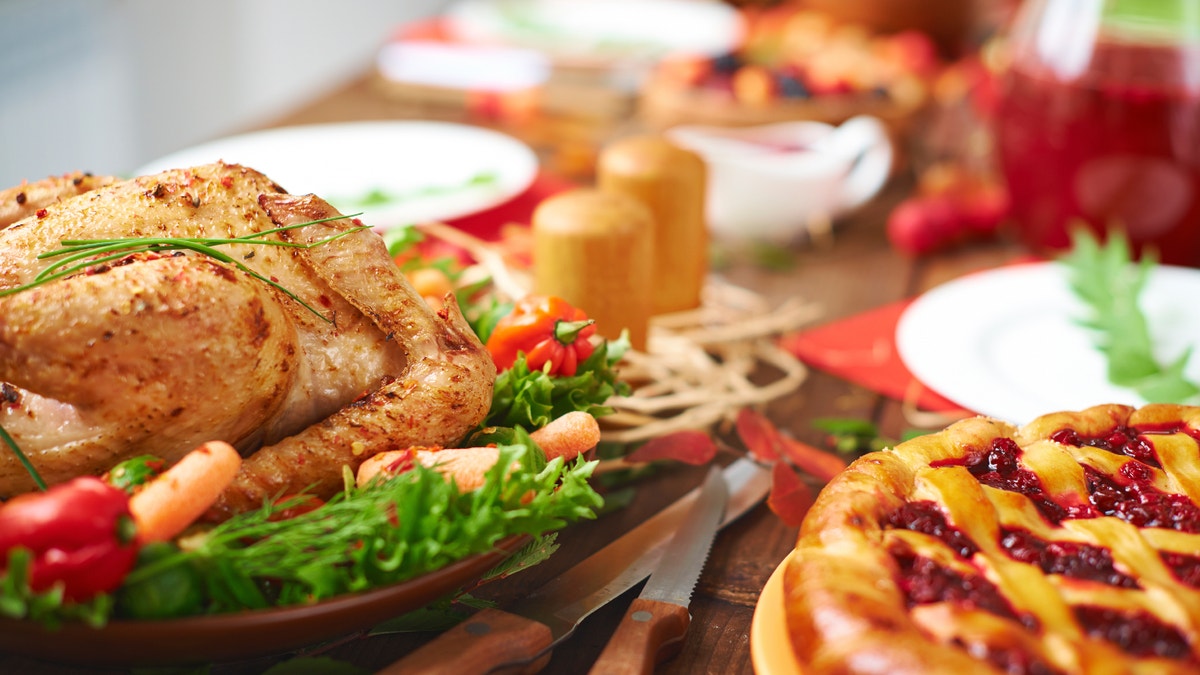
It’s almost Thanksgiving— you can practically hear the collective unbuckling of belts across the nation.
The average American will eat about 4,500 calories and 229 grams of fat on Thanksgiving, according to the Calorie Control Council. That’s more than twice the recommended 2,000 calories per day and about as much fat as in 10 Big Macs.
Even once a year, that can take a toll on your body, and not just in excess calories. Overeating can cause bloating, heartburn, and general discomfort that can make the latter part of the holiday less than joyful. So how do you walk a line between indulgence and all-out gluttony?
READ MORE: Which Thanksgiving Dish Is Healthiest?
It’s in the details. Reducing your consumption by just 10 percent to 20 percent can save hundreds of calories and prevent a lot of discomfort. But you needn’t count or tally on Thanksgiving: A few tricks can go a long way.
1. Exercise that morning
A great way to reduce your total calorie count for the day is by burning some off, and doing so first thing in the morning may boost the benefits. Recent studies indicate that exercising in a fasted state is better for weight loss and insulin regulation. This is good, because after that big meal, your body will release a lot of insulin, a hormone that helps convert the carbohydrates in those mashed potatoes and stuffing to energy and body fat. The better insulin is regulated, the more efficiently you’ll use those calories.
READ MORE: All About Carbohydrates and the Glycemic Index
Even if you’re not a regular exerciser, Thanksgiving is a great day to get moving. Many cities across the country host a 5K “turkey trot” for runners and walkers — the perfect appetizer for your big feast later.
2. Don’t skip breakfast
If your strategy is to fast up until the big meal, you might want to rethink. “If you arrive starving, you’re more likely to choose items that are higher in calories, fat and sugar,” says Trinh Le, a registered dietitian and nutritional consultant for popular health app MyFitnessPal. “Not to mention you’ll be hangry pre-meal,” adds Le, referring to the mood swings that often accompany hunger.
Le recommends a balanced Thanksgiving brunch that includes veggies, lean protein and whole grains to avoid coming to the table ravenous. And if you’re one of the cooks this year, it will help keep you from snacking during meal prep.
3. Drink a lot of water, all day long
Even if you’re a big water drinker already, Thanksgiving is a good day to step up your hydration game. “It’s easy to mistake thirst for hunger, and a lot of us don’t get enough fluids into our day,” says Le. Staying hydrated will help control cravings and snacking throughout the day, she adds.
Your hydration doesn’t have to come from plain flat water, either. Unsweetened tea is a great option, as are calorie-free flavor enhancing drops, available near the sports drinks at grocery stores. Sparkling water is also great, and the bubbles will help you feel fuller.
4. Make a few swaps
If you’re cooking this year, you can take a few steps to lower the calories in your dishes. Try using whole milk in the mashed potatoes instead of cream. Or if you’re in charge of green beans, skip the casserole and roast them instead — you can still add the fried onion straws, of course.
If you’re not cooking, there are other swaps that can save you a lot of calories. Choosing pumpkin pie over pecan can save more than 400 calories for a ⅛-pie slice. When it comes to turkey, choosing light meat over dark saves 50 calories per 3-oz. serving (and let’s face it: You’ll probably have more than that).
READ MORE: Healthiest Domestic and Craft Beers for the Holidays
6. Scoop for yourself
When someone else is serving up the sides for you, portions are likely to be generous. You might tell yourself you don’t have to eat it all, but that’s easier said than done when grandma’s famous chestnut stuffing is sitting there on your plate.
Instead, put the control — and the serving spoon — in your own hands, and just take a little less than you’re inclined to. Remember, just 10 percent to 20 percent less of each dish can make a big difference.
7. Wait 20 minutes to get seconds
Many of us indulge well past the point of satisfying hunger on Thanksgiving, and part of the problem is how fast we eat. This is because the hormone leptin, which sends the signal that your stomach is full, takes about 15 to 20 minutes to reach the brain.
“The best thing you can do is slow down, savor your meal and be mindful about what your body is telling you,” says Le.
Her advice: Chew each bite 10-30 times, depending on texture. Not only will this slow your intake, but it will aid in digestion so you’re more comfortable after the meal.
At the end of the day, Thanksgiving isn’t just about food. Don’t obsess over calories. Enjoy yourself, be mindful and show your body thanks for all it does by stuffing it just a little less.
